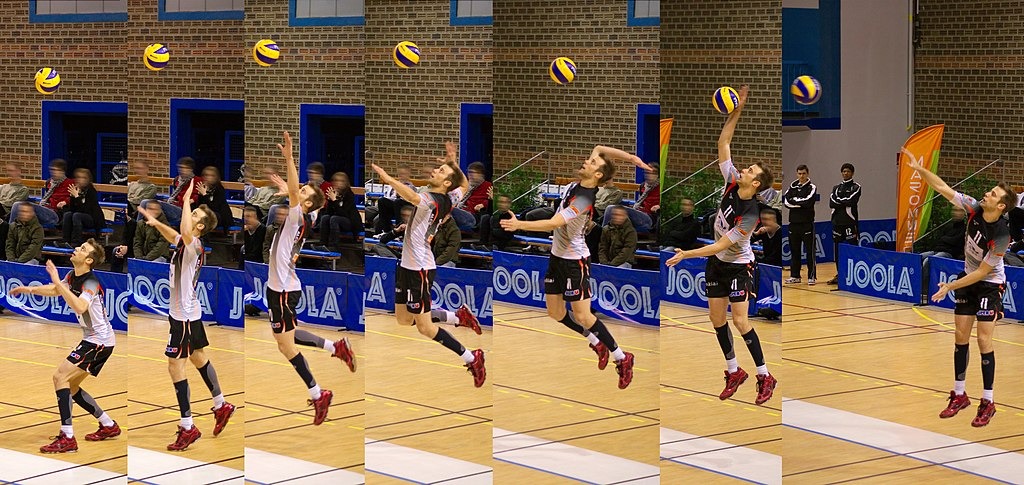Sports Blog, Uncategorized
Why Does One Volleyball Player Wear Volleyball Different Color Shirt?
Understanding the volleyball different color shirt: Significance and Speed of Serves. In the dynamic sport of volleyball, where strategy and coordination are paramount, one often notices a player donning a olleyball different color shirt than their teammates. This seemingly simple aspect of uniform design carries significant importance within the game’s structure. This essay delves into why one volleyball player wears a different color shirt, and explores the speed of volleyball serves, highlighting how these elements contribute to the overall strategy and flow of the game.
Why Does One Volleyball Player Wear Volleyball Different Color Shirt?
In volleyball, the player wearing a shirt of a different color is typically the libero, a specialized defensive player with distinct responsibilities and restrictions. The role of the libero is integral to the team’s defensive strategy, and the distinct shirt color is a crucial aspect that facilitates this role.
The libero serves several key functions on the court. Primarily, they are tasked with receiving serves and digging up attacks from the opposing team. Their main objective is to ensure that the ball is kept in play and to deliver accurate passes to the setters, enabling smoother offensive transitions. To maximize their effectiveness, liberating the libero from the constraints applied to other players is essential.
The olleyball different color shirt is not merely for visual distinction; it is a practical necessity. According to the rules set forth by the Fédération Internationale de Volleyball (FIVB), the libero must wear a jersey that contrasts with the rest of the team. This rule ensures that referees, players, and spectators can easily identify the libero’s actions on the court, particularly during substitutions and specific plays.
The libero is subject to unique rules compared to other players. For instance, they are not allowed to serve, attack the ball above the net’s height, or block. These restrictions are designed to ensure that the libero’s role remains focused on defense and serve reception. The olleyball different color shirt assists referees in monitoring these regulations, as it is immediately apparent when the libero is involved in an action that is against the rules.
How Fast Are Volleyball Serves?
The Speed of Volleyball Serves: the initial action of each play, are critical in setting the tone of a game. The speed of serves varies widely based on the type of serve executed and the skill of the player. Generally, serves can range from 50 to 80 miles per hour, though exceptional players may serve even faster.
There are several types of serves in volleyball, each with distinct characteristics and speeds:
Underhand Serve: Often the least powerful, the underhand serve is typically used by less experienced players. Its speed is relatively slow, averaging around 40 to 50 miles per hour. The serve is executed with an underhand motion, making it easier to control but less likely to be a strong offensive weapon.
Overhand Float Serve: This serve is executed with an overhand motion without any spin. The float serve is designed to be unpredictable, creating a “floating” effect that can disrupt the receiver’s timing. Speeds of float serves generally range from 50 to 70 miles per hour. Its effectiveness lies in its erratic movement, which can make it challenging for opponents to predict and handle.
Topspin Serve: The topspin serve is characterized by a forward spin, which causes the ball to drop quickly after it crosses the net. This type of serve is often faster, reaching speeds of 60 to 80 miles per hour. The topspin serve’s speed and downward motion make it more difficult for opponents to receive cleanly.
Jump Serve: Known for its power and speed, the jump serve is executed while the server leaps into the air, striking the ball with a strong overhand motion. Jump serves can exceed speeds of 70 miles per hour and often incorporate both topspin and additional velocity due to the server’s momentum. This serve is one of the most aggressive and challenging serves to handle, contributing significantly to the server’s team’s advantage.

The effectiveness of a serve is not only dependent on its speed but also on the server’s ability to vary the serve’s trajectory and spin. A well-executed serve that combines speed with strategic placement can significantly disrupt the receiving team’s formation, making it harder for them to mount a successful attack.
The distinct shirt color worn by the libero in volleyball is more than a simple uniform choice; it is a vital component of the game’s regulatory and strategic framework. By visually distinguishing the libero from other players, this practice ensures that the specialized role of this defensive player is upheld and monitored effectively.
Meanwhile, the speed of volleyball serves reflects the sport’s dynamic nature, where serves ranging from 50 to 80 miles per hour can greatly influence the game’s flow. The ability to execute various types of serves with different speeds and spins is a testament to the skill and strategy involved in volleyball.
Together, these elements—the distinct shirt color and the speed of serves—illustrate how nuanced and strategic volleyball is as a sport. Understanding these aspects enhances our appreciation of the game, shedding light on the intricate balance of rules and athleticism that define volleyball at its highest level.
The libero’s role in volleyball is a testament to the sport’s continuous evolution. By introducing a specialized defensive position, the FIVB enhanced the game’s tactical depth and spectator appeal. The libero’s distinctive attire serves as a visual symbol of their unique responsibilities, while their contributions to the team’s success have solidified their status as indispensable players. As volleyball continues to grow in popularity, the libero will undoubtedly remain a captivating and integral part of the sport.

You May Be Interested In Volleyball Different Color Shirt Products:



